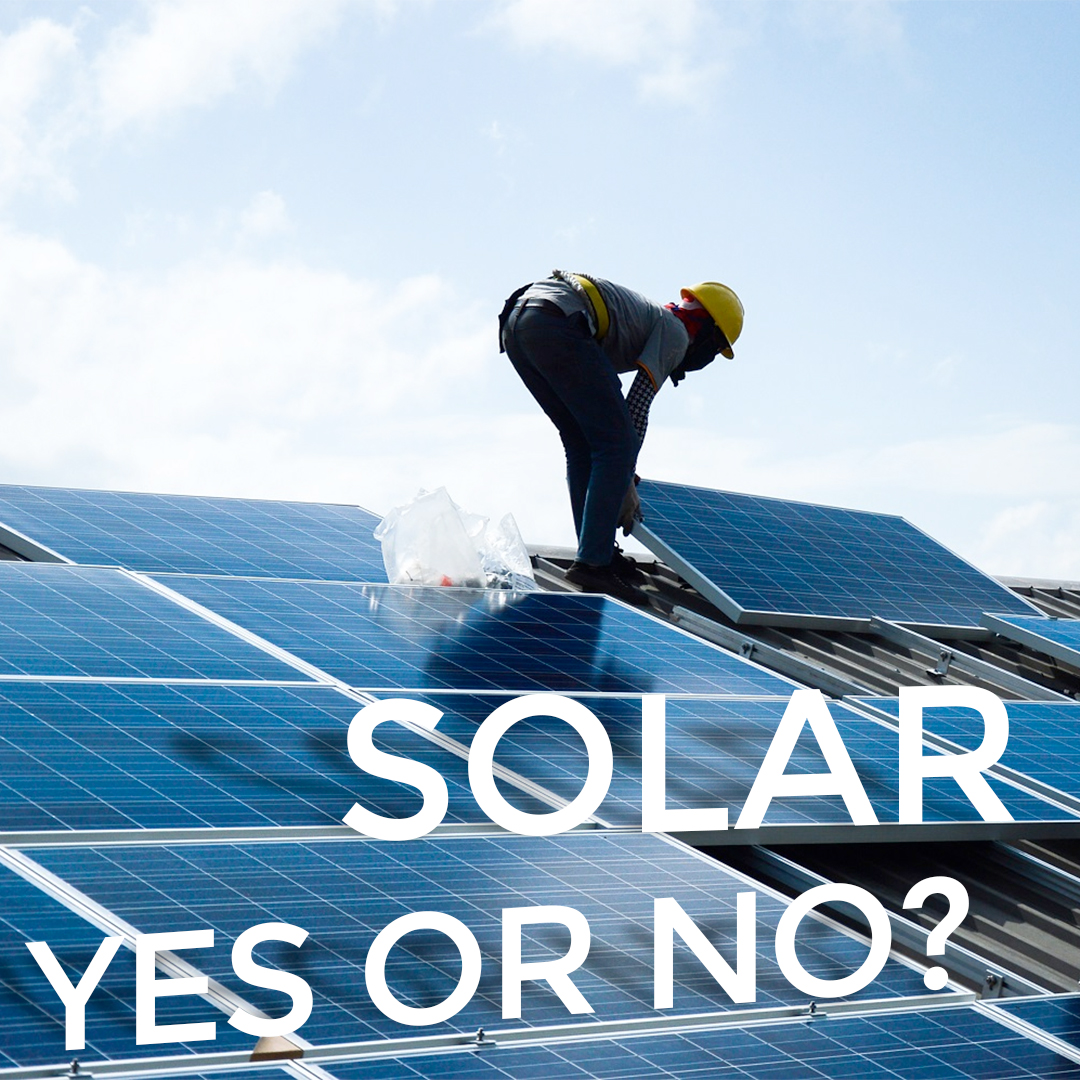Solar power is a great, clean way to power your home and your investment property.
With solar energy you can reduce your dependency on high-priced electricity while you simultaneously reduce your carbon footprint.
Here at Capital Properties, we’re all for reducing our carbon footprint. We’ve written about how we try and make our lives more ‘green’ and have shared some tips to help you do it in this blog post: Going green and ideas for sustainability.
But solar isn’t just about saving the planet, it’s also a wise investment on an investment. And you know we love a good investment! A good quality solar power system should last 25 years or more and can pay itself off over a period of 4 to 7 years. That means that after the initial outlay, you the homeowner, will have a reduced power bill and save each quarter for an average of 5 and a half years, after which time you’ll reach a point of ‘brake even’ on your purchase. And from there on in you’ll benefit from another 15+ years of savings! That’s a pretty decent return on your investment.
On the go? Here’s 30 seconds of take outs:
- Solar is a great incentive for potential tenants and can help you generate more rental revenue.
- In Australia, there are attractive tax benefits to installing a solar system.
- Installing a solar system is straightforward and helps you manage electricity costs effectively.
- A solar expert can help you decide on the best northerly facing position for your solar panels.
- Solar power is easy to use and can save you plenty of money, and the planet, in the long run.
- As a guide, a 3kW system should earn the property’s owner $100-$150 off of a quarterly power bill.
Keep reading >>
Why choose solar power for an investment property?
Attract more (and better) tenants
Savvy tenants find solar powered properties a very attractive proposal because the core advantage of solar panels is to reduce the occupant’s electricity bills. And who doesn’t want to pay less for their electricity bill? It’s also becoming increasingly important to many people to live an environmentally friendly lifestyle. So, having a solar-powered property will make your investment/rental property a much more attractive proposition for any prospective tenant that might be viewing similar homes in a suburb. It could make the difference for your property to win the tenancy agreement with a great tenant.
Creates higher rents
Due to the ongoing savings a prospective tenant may have on utilities, there could be an opportunity for you to charge more rent.
Tax deductions
The Australian Tax Office allows an investor to claim a certain percentage in the depreciation of the system value each year by using the ‘diminishing value’ method over a 20-year period. At the time of writing this, small to medium sized Australian Businesses can claim an instant tax deduction on the cost of the entire solar asset, rather than over a number of years. This means that the cost of the solar system can be fully depreciated as soon as it’s been purchased. Note: as all Australian States and Territories have differing tax laws, you should confirm this information with your accountant.
Solar Systems 101
Every property comes with its own challenges for installation and a solar expert will help you find the right position for yours. But as a general guide, here are a few pointers that are helpful to remember.
Where are the solar panels placed?
The optimal position for solar panels is on a north facing roof with a minimum of a 10 degree pitch. Ideally, you’ll need a clear ‘view’ to the sky without tree cover or shade from nearby tall buildings.
How many solar panels will I need?
The most important thing to measure before you get solar power is how much electricity you consume in your home, and when you use it. You can check your bill to see how much power is being used on a typical day and then you can choose the right solar system for you. Each kilowatt of a solar panel system will produce between 3 and 5 kWh of clean, renewable energy per day.
kWh stands for ‘kilowatt-hour’ which is a unit of energy equal to 3,600 kilojoules. The kWh is used to measure how much electricity is used and billed to customers. A typical Australian home uses 16-20 kWh of electricity per day. Typically, around 3 to 4 solar panels are needed to make up 1 kilowatt, so once you’ve worked out your usage, you can figure out how many panels you’ll need and where they’ll fit best.
Do I have to change the way I use my electricity?
The simple answer is ‘no’. You can continue to use your household electrical appliances as normal. However, it’s a good idea to “make hay while the sun shines”! In other words, you can maximise the efficiency of your solar electricity by choosing to use (or set timers) to run your washing machines, dryers, dishwashers, etc. during the day.
What happens on cloudy days?
In many cases, solar power systems will still generate electricity under cloudy conditions. Obviously, the efficiency will be affected, and the panels will produce less energy than on a clear, sunny day. On these overcast days any additional energy requirements will be supplemented by the grid.
What happens during a blackout?
During a blackout your solar power inverter will automatically shut off, preventing any
electricity from feeding back into the grid which in turn will stop any solar electricity from being
used by the home. Once the power is restored, your system will simply turn itself back on.
What are the three main components of a solar power system?
- The first and most obvious component of a solar power system are the solar panels. These can be made with either be polycrystalline or monocrystalline and they are usually affixed to your roof.
- The second main component of a solar system installation is the inverter. This can be either a string inverter (around the size of a briefcase) or multiple microinverters, each of which measure around the size of a paperback book.
- The third component of a solar power system installation is the racking or mounting. This is what’s securely attached to your roof supports for your solar panels to be mounted on.
We hope we’ve convinced you to take another look at solar for your home or investment property. After all, there’s not that many things that will make you feel great about saving the planet and save you money at the same time. In our eyes, it’s a win-win!
If you have any more questions about solar energy or want to learn some more practical investment tips, then we’d love to hear from you. For more valuable advice, check out some of our free investor tools: Online property investment toolkit | Book Your Pinnacle Program Review | Property Investor – Self Evaluation Tool






